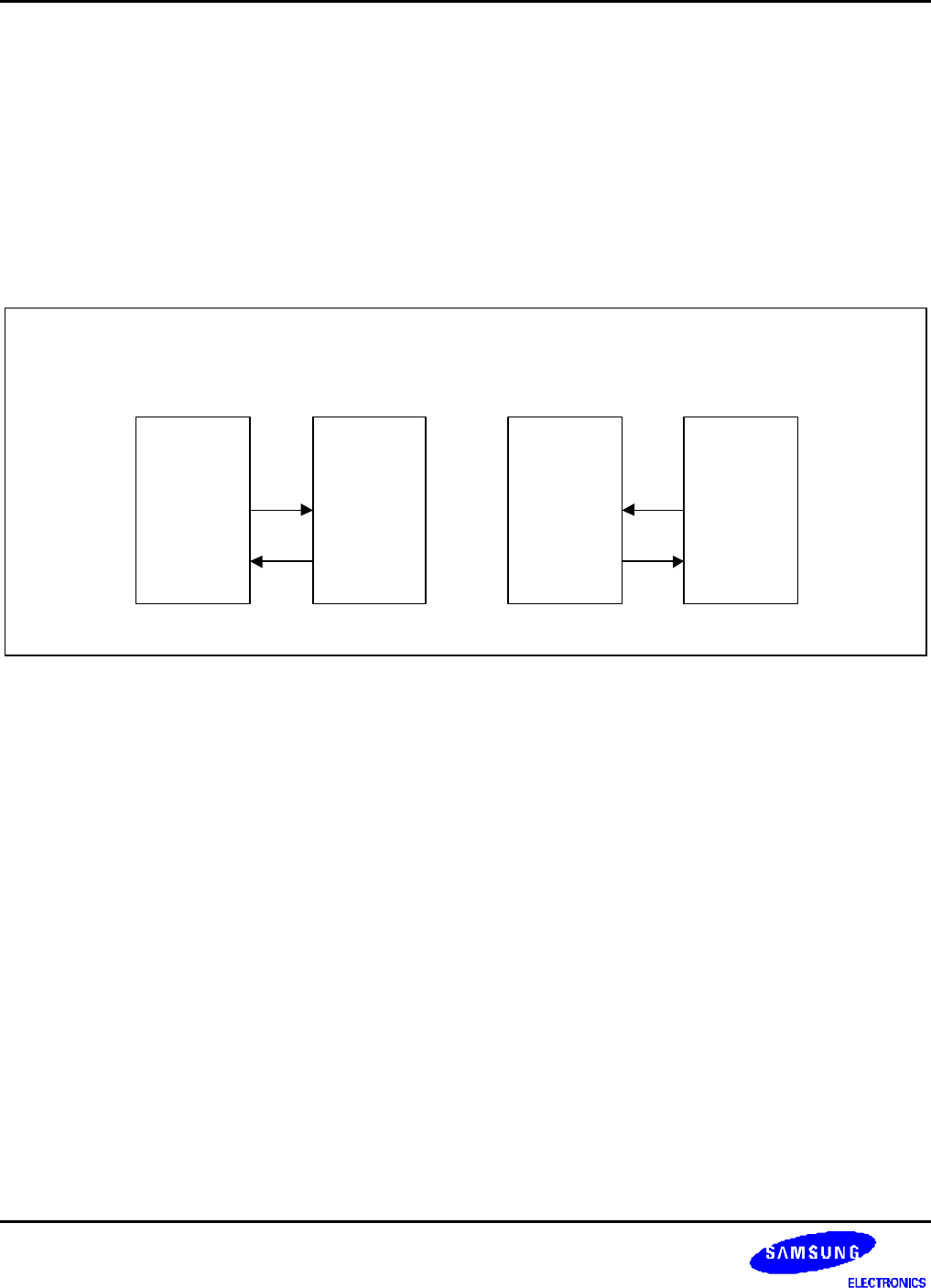
UART S3C2410A
11-4
Auto Flow Control (AFC)
The S3C2410A's UART 0 and UART 1 support auto flow control with nRTS and nCTS signals. In case, it can be
connected to external UARTs. If users want to connect a UART to a Modem, disable auto flow control bit in
UMCONn register and control the signal of nRTS by software.
In AFC, nRTS depends on the condition of the receiver and nCTS signals control the operation of the transmitter. The
UART's transmitter transfers the data in FIFO only when nCTS signals are activated (in AFC, nCTS means that other
UART's FIFO is ready to receive data). Before the UART receives data, nRTS has to be activated when its receive
FIFO has a spare more than 2-byte and has to be inactivated when its receive FIFO has a spare under 1-byte (in
AFC, nRTS means that its own receive FIFO is ready to receive data).
RxD
nRTS
UART A
TxD
nCTS
UART B
TxD
nCTS
UART A
RxD
nRTS
UART B
Transmission case in
UART A
Reception case in
UART A
Figure 11-2. UART AFC Interface
NOTE
UART 2 does not support AFC function, because the S3C2410A has no nRTS2 and nCTS2.
Example of Non Auto-Flow control (controlling nRTS and nCTS by software)
Rx operation with FIFO
1. Select receive mode (Interrupt or DMA mode).
2. Check the value of Rx FIFO count in UFSTATn register. If the value is less than 15, users have to set the value of
UMCONn[0] to '1' (activating nRTS), and if it is equal or larger than 15 users have to set the value to '0'
(inactivating nRTS).
3. Repeat the Step 2.
Tx operation with FIFO
1. Select transmit mode (Interrupt or DMA mode).
2. Check the value of UMSTATn[0]. If the value is '1' (activating nCTS), users write the data to Tx FIFO register.


















